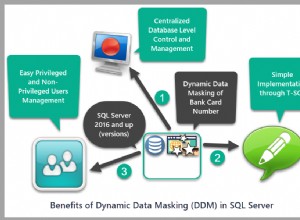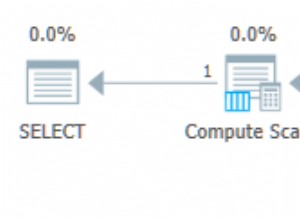Ce n'est pas joli, mais je pense que cela le fait et peut-être que cela peut être la base de quelque chose de moins encombrant. Notez que j'utilise un "faux" INNER JOIN juste pour initialiser une variable pour la première fois - il ne sert à rien d'autre.
SELECT ID,
supplier,
qty,
cumulative_qty
FROM
(
SELECT
ID,
supplier,
qty,
-- next line keeps a running total quantity by supplier id
@cumulative_quantity := if (@sup <> supplier, qty, @cumulative_quantity + qty) as cumulative_qty,
-- next is 0 for running total < 5 by supplier, 1 the first time >= 5, and ++ after
@reached_five := if (@cumulative_quantity < 5, 0, if (@sup <> supplier, 1, @reached_five + 1)) as reached_five,
-- next takes note of changes in supplier being processed
@sup := if(@sup <> supplier, supplier, @sup) as sup
FROM
(
--this subquery is key for getting things in supplier order, by descending id
SELECT *
FROM `sample_table`
ORDER BY supplier, ID DESC
) reverse_order_by_id
INNER JOIN
(
-- initialize the variables used to their first ever values
SELECT @cumulative_quantity := 0, @sup := 0, @reached_five := 0
) only_here_to_initialize_variables
) t_alias
where reached_five <= 1 -- only get things up through the time we first get to 5 or above.




